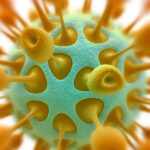Ticks have been particularly abundant and problematic here in southwestern Pennsylvania this past spring, summer, and moving into fall. While getting a tick bite does not necessarily mean that you will contract Lyme disease or other illnesses commonly transmitted by ticks, it’s important to take precautions to help prevent complications that could arise if these conditions are left untreated. Here’s what you should do if you or a loved one is bitten by a tick.
1. Properly Remove the Tick
To remove a tick that has embedded itself in your skin, first, try to remain calm. Using a pair of tweezers, grasp the head of the tick (not the body) and gently twist and pull at the same time. You don’t want to use too much force, as it is possible to remove the body of the tick without getting the head. This process can take some time, but try to be patient and continue steadily pulling and twisting until the mouth of the tick is disengaged.
Never attempt to light a tick on fire while it is attached to your skin, as this can result in injury.
2. Thoroughly Cleanse the Wound
Once the tick is removed, it’s a good idea to place it in a Ziploc bag in case your doctor would like to test it to help identify diseases that it may have been carrying. Then, wash the bite with soap and warm water and apply an antibiotic ointment like Neosporin to the area.
3. Keep an Eye out for Redness or a Rash
It’s common to see a small red bump directly where the tick bite was. But if you notice that this bump has turned into a much larger rash, often resembling a bullseye, that is warm to the touch or itchy, see your doctor right away. He or she can test you for Lyme disease and may prescribe the proper medication to treat it.
If you have specific questions or concerns regarding a tick bite on you or a family member, feel free to contact the AKH Foundation’s community nurses for more information.






